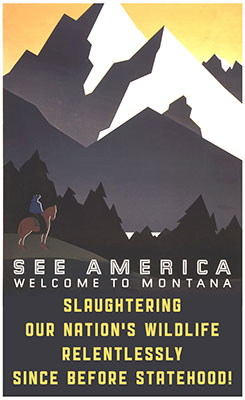What is the Mexican Gray Wolf?

The Mexican gray wolf (Canis lupus baileyi), or “lobo,” is the smallest, southernmost occurring, rarest, and most genetically distinct subspecies of gray wolf in North America. It once occurred in the mountainous regions of the Southwest from central Mexico throughout portions of Texas, New Mexico, and Arizona, and perhaps even farther north, as suggested by more recent research. Aggressive predator control programs towards the turn of the century all but exterminated the Mexican wolf from the wild. With the capture of the last 5 remaining Mexican wolves in the wild in Mexico from 1977 - 1980, a captive-breeding program was initiated and saved the Mexican wolf from extinction. Today, there are approximately 186 wolves back in the wilds with 114 in New Mexico and 72 in Arizona.
The Slaughter Continues!

A slaughter of wolves is underway in Montana, Idaho and Wyoming that has no precedent in the past 100 years. Hunters in Idaho can shoot or trap as many as they like year-round on private land. They can lure wolves within gun range by putting out bait, run them down to exhaustion using A.T.V.s and snowmobiles and stalk them after dark using night vision technology. Baiting and night hunting are also allowed on private land in Montana, where an individual can kill up to 20 wolves a year by hunting and trapping them. Both states allow bounty payments on dead wolves, which incentivize the bloodshed. In Wyoming, there is no limit on the number that can be killed across 85 percent of the state. (Excerpted from The New York Times article, A Slaughter of Wolves Like This Hasn’t Been Seen in a Century.)
Contact New Mexico Governor Lujan-Gresham TODAY!
The Catron County Board of County Commissioners unanimously passed a resolution to declare a "state of emergency" in Catron Country due to the presence and perceived impacts of endangered Mexican gray wolves. They plan to follow this up with a request to Governor Lujan Grisham. They are implementing a misinformation campaign to drum up fears of human safety and exaggerate claims of livestock losses due to wolves.
If all parties involved really wanted a solution The Catron County Board of County Commissioners could start by not lying about the so-called threats of our wolves. And then our government, state and federal could easily compensate ranchers for any validated predator losses. Especially with all that money DOGE is saving now, huh?
Call Governor Lujan Grisham's office today at Phone: (505) 476-2200










